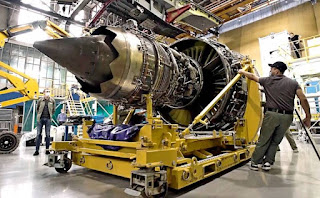According to Izvestia, the Russian Ministry of Industry and Trade has decreased the number of engines that are scheduled to be manufactured in Russia by 2026 for the SSJ-100, MC-21, and Tu-214 aircraft. Aircraft manufacturers will now receive only 128 engines, as opposed to the 192 engines that were originally scheduled under the aviation development program through 2030, due to the postponement of production schedules. As a result, the aircraft production schedule may also be modified. Government sources have suggested that additional modifications may be necessary due to the fact that market demand has been less than anticipated in the program.
In an explanatory note that accompanies a draft government resolution, the Ministry of Industry and Trade has revised the volumes and timelines for the delivery of domestic aircraft engines in 2025–2026. Despite the fact that United Engine Corporation (UEC) had intended to manufacture 12 units in 2024 and 24 in 2025, only two PD-14 engines were delivered by November 2024. Since then, the objective for 2025 has been reduced to seven units.
The explanatory note indicates that 128 engines are scheduled for assembly over the next two years. Of these, 24 are scheduled for 2025 (six PD-8, seven PD-14, and 11 PS-90 engines) and 104 for 2026 (44 PD-8, 28 PD-14, and 32 PS-90 engines). Certification for the PD-8 engine has not yet been finalized. The initial 2030 development program was intended to produce 192 engines in 2025–2026; however, this number has been reduced by 50%.
The United Aircraft Corporation (UAC) experienced leadership changes in November 2024. Vadim Badeha, who was previously the president of UEC, was appointed as the director general of UAC. The administration of both entities is now directly overseen by Badeha, as the heads of Yakovlev PJSC and Tupolev JSC have resigned.
The adjustments, according to the Ministry of Industry and Trade, are intended to ensure that the plans are in accordance with the Comprehensive Civil Aviation Development Program (CCADP) through 2030. The cost of storage and preservation renders it economically unfeasible to produce engines in advance of contractual deadlines. It is anticipated that the production deficit will be rectified between 2027 and 2030.
The PD-8 engines are designed for SSJ-100 aircraft, with two engines per plane. The PD-14 engines are intended for the MC-21-310, with two engines. The PS-90 engines are designed for the Tu-214 and Il-96-300, with two and four engines, respectively. Nevertheless, the current production figures do not account for replacement and repair reserves, which account for 10–40% of operational fleets. Up to 25 SSJ-New and 17 MC-21 aircraft may be operational in Russia by the conclusion of 2026.
The SSJ-100 and MC-21 used the Russian-French SaM146 engines and Pratt & Whitney PW1431G engines, respectively. However, international sanctions have rendered further utilization impossible.
The primary concern is not the assembly of aircraft, but rather the fabrication of components, particularly avionics, which includes an uncertified domestic TCAS system that has been in development for more than 12 years. The Tu-214, which necessitates 13% component replacement, and the MC-21 and SSJ-100, which necessitate 60% and 80%, respectively, encounter substantial obstacles in the context of import substitution.
The aviation sector has exhibited resilience, as evidenced by the regular operation of flights, and a government source acknowledged the necessity of revising the production program. Although foreign aircraft can continue to operate for 20–30 years, their economic sustainability will eventually be compromised by the escalating costs of maintenance.
In the coming years, experts recommend that the proportion of domestic aircraft be increased, and in-house repair technologies be developed, while replacing approximately 500 narrow-body medium-haul aircraft, such as the Airbus A319/320/321 and Boeing 737-800.
Official Website of Youtube Channel – Altitude Addicts


